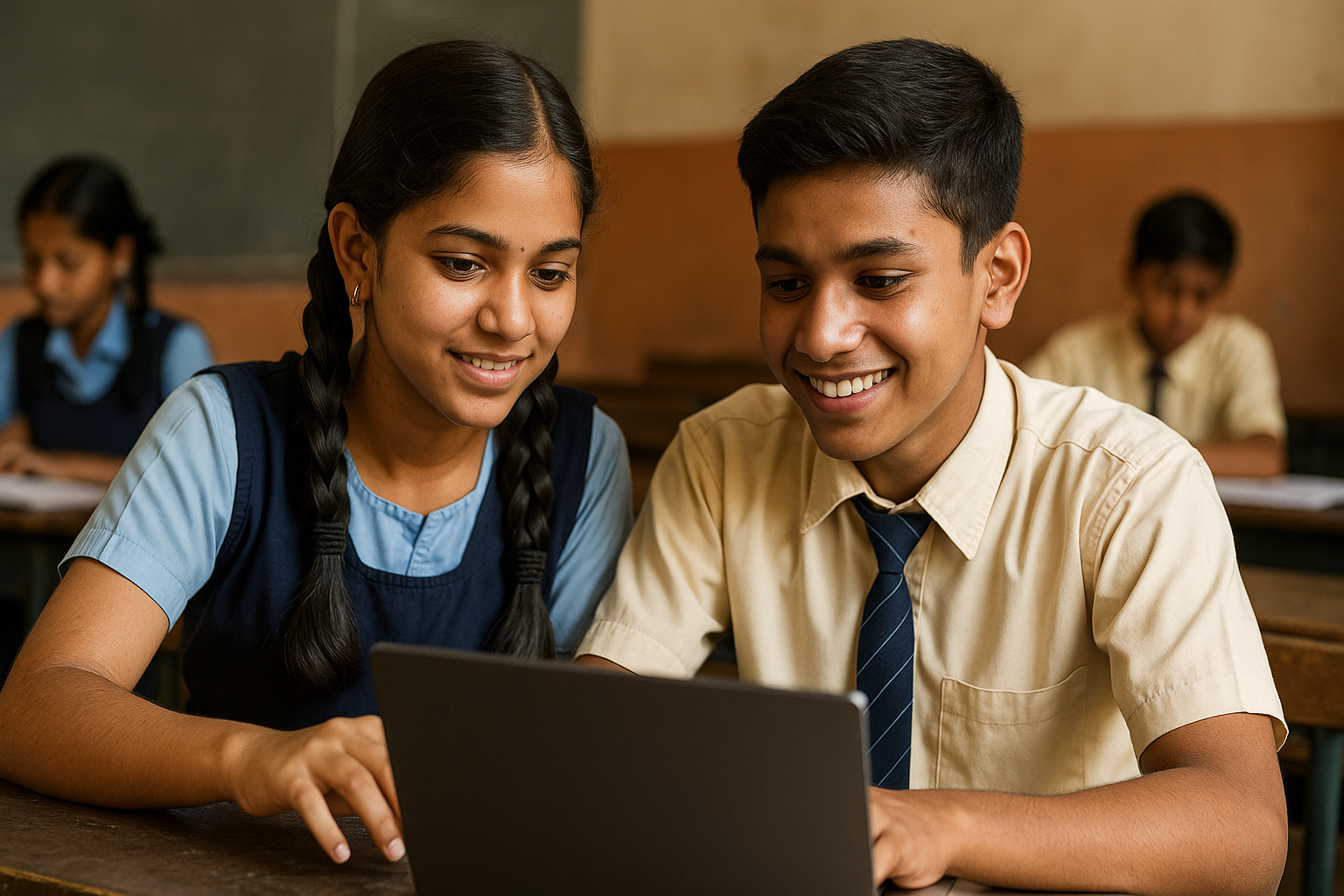Introduction
In an era where technology is redefining the way children learn, a deep digital divide still separates students in rural and urban India. While students in metro cities increasingly rely on tablets, smartboards, and online classrooms, their rural counterparts often struggle with basic access to the internet or digital devices. This growing disparity not only affects academic outcomes but also limits the future opportunities of millions of children across the country.
Understanding the Digital Divide
The digital divide refers to the gap between those who have access to modern information and communication technology (ICT) and those who do not. In the context of education in India, this divide manifests in access to:
- Devices (laptops, tablets, smartphones)
- Internet connectivity
- Digital literacy
- Quality online educational content
According to the National Sample Survey (NSS) and reports by organizations like ASER and UNICEF, fewer than 30% of rural households have access to the internet, compared to over 70% in urban areas. The disparity is even starker when we consider the quality and speed of internet connections and the affordability of devices.
Urban vs Rural: A Stark Contrast
Urban India:
- Students often attend private or well-funded public schools equipped with smart classrooms and digital learning tools.
- Internet connectivity is relatively reliable and fast.
- Parents are more likely to be digitally literate and able to support their children’s online learning.
- Exposure to online learning platforms like BYJU’S, Khan Academy, and Coursera is common.
Rural India:
- Many schools lack basic infrastructure like electricity or running water, let alone computers or internet access.
- Teachers often lack training in digital tools and platforms.
- Students rely heavily on textbooks and rote learning.
- Families may have a single smartphone shared among multiple members, and connectivity can be sporadic or absent altogether.
COVID-19: Accelerating the Divide
The COVID-19 pandemic acted as a stress test for India’s education system. With schools closed, online learning became the only viable option—but not for everyone.
In urban areas, students quickly transitioned to Zoom classes and learning apps. In rural areas, millions of children were left behind. Reports suggest that over 50% of rural children lost contact with formal education during the pandemic. For many, the loss was not temporary—some children dropped out entirely to support their families or because they fell too far behind.
Why This Divide Matters
- Widening Learning Gaps: Students in rural areas fall further behind their urban peers, compounding educational inequities.
- Limited Future Opportunities: Without digital skills, students are at a disadvantage in the modern job market.
- Social Inequality: The divide reinforces existing caste, class, and gender inequalities, with girls in rural areas often the most affected.
- National Growth: A large section of India’s youth being digitally excluded hinders the country’s overall development and global competitiveness.
Bridging the Divide: What Can Be Done
To close the digital gap, a multi-pronged strategy is essential:
- Infrastructure Investment: Expand internet connectivity, especially through BharatNet and public Wi-Fi hotspots in villages.
- Device Access Programs: Distribute low-cost tablets and laptops through government and CSR initiatives.
- Teacher Training: Equip educators with the skills to integrate technology into teaching.
- Localized Content: Develop educational content in regional languages tailored to rural contexts.
- Public-Private Partnerships: Encourage collaboration between the government, NGOs, and edtech companies to reach underserved communities.
- Digital Literacy Campaigns: Train students and parents on how to use technology safely and effectively.
Conclusion
Bridging the digital divide is not just about technology—it’s about equity, inclusion, and empowerment. Every child, regardless of where they live, deserves the opportunity to learn, grow, and thrive in the digital age. As India strides toward becoming a knowledge economy, ensuring digital access to all its children is not optional—it’s imperative.


Leave a Reply